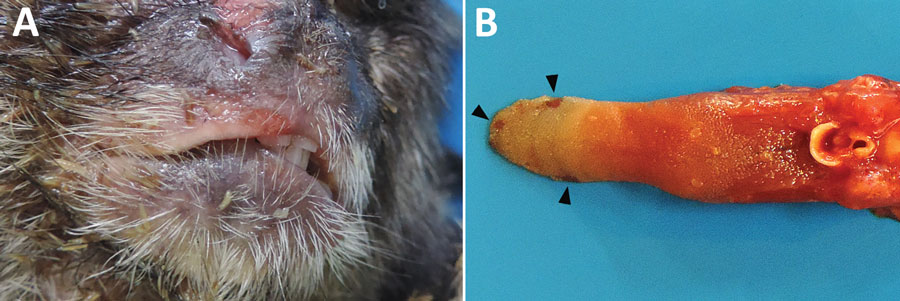Volume 28, Number 4—April 2022
Research
Fatal Human Alphaherpesvirus 1 Infection in Free-Ranging Black-Tufted Marmosets in Anthropized Environments, Brazil, 2012–2019
Figure 2

Figure 2. Macroscopic finding in the tongue and lip from a black-tufted marmoset with fatal human alphaherpesvirus 1 infection, Brazil, 2012–2019. A) Erosions and ulcerations on the lip. B) Glossitis with multifocal ulcers and erosions (arrowheads).
Page created: January 26, 2022
Page updated: March 19, 2022
Page reviewed: March 19, 2022
The conclusions, findings, and opinions expressed by authors contributing to this journal do not necessarily reflect the official position of the U.S. Department of Health and Human Services, the Public Health Service, the Centers for Disease Control and Prevention, or the authors' affiliated institutions. Use of trade names is for identification only and does not imply endorsement by any of the groups named above.